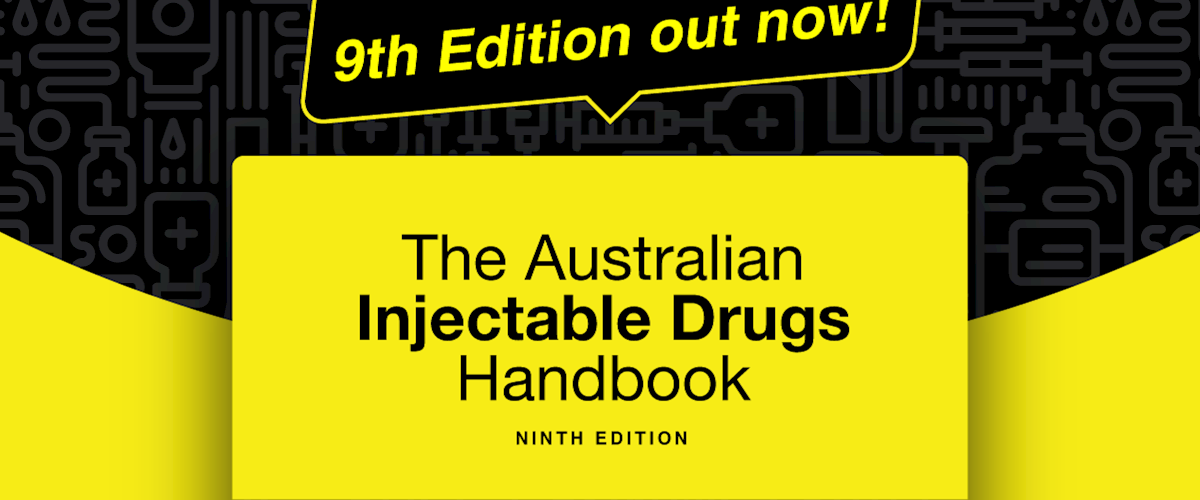AIDH9 out now! SHPA releases biggest ever ‘yellow book’
The largest ever Australian Injectable Drugs Handbook (AIDH) was released today by the Society of Hospital Pharmacists of Australia (SHPA), with the new ninth edition of the essential frontline resource featuring more than 500 medicines, including 60 new entries, and paediatric information extended to cover 240 monographs, including intramuscular (IM) and subcutaneous routes for over 100 medicines.
Now available through the SHPA Bookshop, the indispensable ‘yellow book’ has been comprehensively updated and now includes eye-catching identification of potentially hazardous medicines and time-critical medicines.
SHPA President Tom Simpson says AIDH has been a critical Australian healthcare resource for more than 25 years.
‘AIDH provides up-to-date and vital information on more than 500 injectable medicines and is an essential frontline resource ensuring patient safety and quality care.
‘AIDH provides health professionals with respected, evidence-based information in a comprehensive one-stop reference, assisting with best clinical practice and productivity.
‘Every monograph has been reviewed by pharmacists and nurses to ensure information is correct, current and relevant to Australian practice, and I thank the 50-plus interdisciplinary members of our editorial and review teams.’
Supporting the release of AIDH9, a ‘What’s new’ insert is included in every printed copy, detailing the edition’s significant changes.
To help ensure copies of AIDH9 are readily available in every hospital ward around the country, SHPA is offering bulk purchase discounts in addition to member pricing. New information from AIDH9 will automatically update through SHPA’s online product partners Medical Director and MIMS.
WHAT ELSE IS NEW IN AIDH9?
- New section on time-critical medicines to assist in identifying those medicines where a delay of more than 30 minutes from the scheduled administration time may cause patient harm.
- Fully revised section on potentially hazardous medicines and occupational risk. Medicines can now be quickly and easily identified as cytotoxic or cancer therapy.
- Expanded range of imported medicine monographs to assist with increased demand in a time of drug shortages. With a total of 55 imported medicine monographs, 24 are new to the ninth edition.
- Updated allergy warnings for penicillins, cephalosporins and carbapenems.
- CoPAT information updated and extended to now include stability information for 23 antibiotics.
- Simplified guide to infusion rate calculations.
- New guidance for priority use of smart pump.
- Expanded information about IM injections including recommended volumes for different sites for both adults and children.
- Addition of a comparative table for phosphates to help avoid confusion associated with the different presentations available.
- Expanded information about minimising the risk of staining with IV iron infusions.


